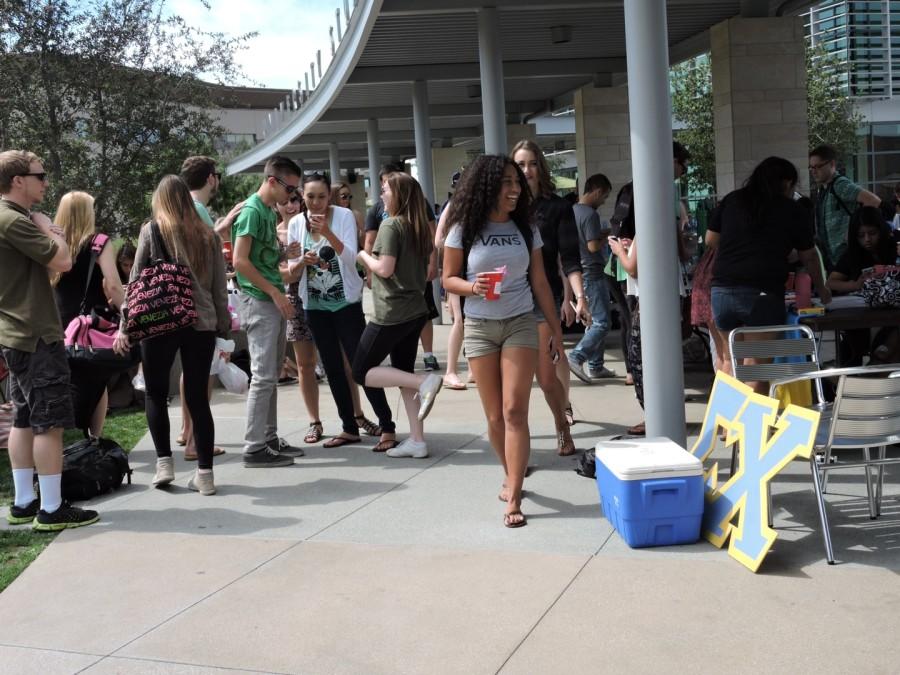[author title=”About the Author” author_id=”24″]
The CSUSM Academic Senate voted 25-15 earlier this month to support the Student Access Initiative — a plan designed to increase course sections and make better use of classroom space.
If adopted, the plan may be integrated into Fall 2016 schedules.
The Student Access Initiative has secured resolutions of support both from the Academic Senate and ASI Board of Directors. The plan would serve as a temporary solution to the lack of sufficient classroom space and course sections for a growing student population.
The proposed scheduling changes, which would move some courses away from 75-minute blocks, twice a week, to 50-minute blocks, three times a week, has been met with both positive and negative responses.
Dr. Laurie Stowell, Academic Senate Chair, said the endorsement came by a vote of the entire 50-member senate.
“We had an opportunity to write a resolution that the Senate’s Executive Committee endorse the Student Access Initiative, but every time we took to a vote the Executive Committee was divided,” Stowell said. “The Executive Committee thought that this proposal was too important to endorse or oppose solely through us, and that all faculty should be involved in a Senate vote” through their representatives.
Prior to the vote, Prof. Laura Makey, a Liberal Studies lecturer and Senate member, proposed that the Senate endorse the initiative if implementation was pushed back until Fall 2016 to give the campus community time to adjust to the culture change and to give faculty time to restructure pedagogy.
Makey said shifting a class to three times a week changes how a class is taught.
“When designing classroom activities, I have to think about how much time things take, including the intro and exit parts of the course,” she said. “We spend about ten minutes total at the beginning and the end with settling in, announcements, administrative stuff, which is OK for a 75 minute class meeting twice a week.
“With a class meeting three times a week, it is going to completely change what I do in class. I would probably have to do an activity one day and talk about it another day. This is not a great solution for students. The material is not as fresh in their minds,” she said.
Some have also raised questions about how the changes will affect faculty workloads, commute times and pay, especially for contingent faculty, which includes lecturers.
“We are supposed to do three things here as faculty: university service, like committees and shared governance, teaching and research,” said Dr. Darel Engen, California Faculty Association President and Associate Professor of History. “The time it takes to commute and restructure our courses takes away from the time we have for service and especially for research.”
He also expressed concern for lecturers who may teach at more than one institution.
“The added commuting time will force them to choose between jobs,” Engen said. “They do not get paid very well and are already barely getting by. They need all of the employment they can get and with these time conflicts, this is a big problem for them.”
Two thirds of the courses on campus are taught by contingent faculty, according to Makey.
“A lot of them are going to bear the brunt of pedagogy revision and teach Monday/Wednesday/Friday. Tenure track faculty will probably want to avoid that,” she said. “I know from experience that contingent faculty sometimes pick up classes late. If they taught in the 75-minute format before and now they are given a 50-minute format where they have to come to campus three days a week, it creates more stress when they are notified in a short timeline.”
Vice Provost Dr. Kamel Haddad said a change in course scheduling and better space optimization are necessary. So far for Fall 2015, 79 classes have been classified as “Impossible to Place”, which means that the course cannot be held at the time and location that it was proposed for, he said.
Implementing the Student Access Initiative at CSUSM will increase the number of courses taught on Fridays and evenings — hours when the most classroom space goes unused.
However, this shift will not affect all classes.
“Eighteen to 19 percent of undergraduate and graduate courses will be impacted. This means that it will necessitate a day change to schedule these courses,” Haddad said. “This might mean moving from meeting twice a week to another twice a week slot, to a three day a week slot or once a week.
“The majority of courses that necessitate a day change would probably be 16.5 percent of the classes impacted, which are classes that are currently meeting Monday/Wednesday before 2:30 p.m.,” he said.
Senate Chair Stowell said she thinks the plan will be a good thing for the campus.
“I think faculty are always able to make the adjustment. They are always pedagogically changing what they do,” Stowell said. “The fact that the Provost’s Office wanted faculty endorsement shows a very good, collegial relationship with the administrators here, and I appreciate how much they worked with us and asked us.”
But Engen remained skeptical.
“Although we definitely have a serious issue with classroom availability, and it is good that the administration is seeking remedies for this, I’m not sure that the Student Access Initiative is the best way to deal with this problem,” he said. “I fear that it could actually limit student access as much as it helps it and create additional workload and difficulties for faculty, especially lecturers, as well.”


